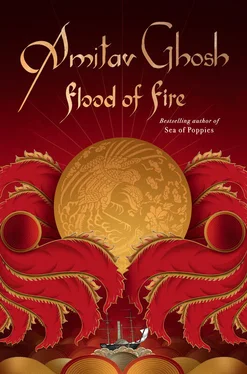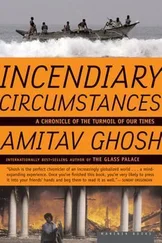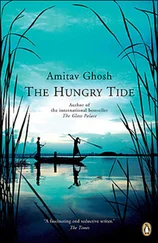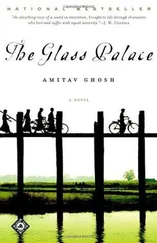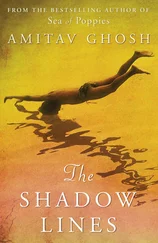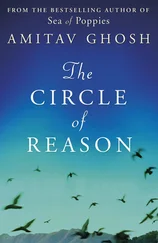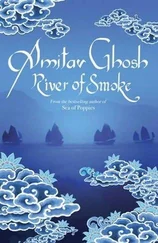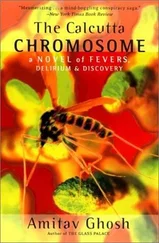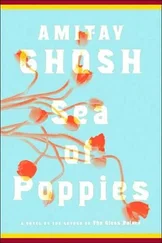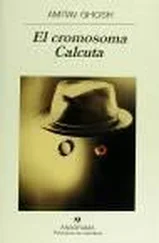None of this could be denied. Jauh haih lo , I said: what you are saying is right.
But why do they fight then?
I did not know how to answer: how does one explain something that one doesn’t understand oneself?
Something that no one understands? All I could say was: They fight because it’s their job. Because that is how they earn money.
So they are from poor families then?
They are from farming families, I said. They come from certain places in the interior of the country. But they are not poor — many are from families of high rank and many of them own land.
This deepened Zhong Lou-si’s puzzlement: Why do they risk their lives then, if not from necessity?
Look, I said, it is hard to explain, but it is because many of them are from clans — I could think of no word for ‘caste’ — that have always made their living by fighting. They give their loyalty to a leader and they fight for him. At one time their leaders were Indian kings, but some years ago it was the British who became the major power. Since then sepoys have been fighting for them just as they did for rajas and nawabs. For them there is no great difference.
But when they fight for the British, do they always do it sincerely, with their hearts in it?
Again I had to stop to think.
It is a hard question to answer, I said. The sepoys are good soldiers and they have helped the British conquer much of India. But at times they have also rebelled, especially when going abroad. I remember that about fifteen years ago there was a big mutiny, in Barrackpore, when a sepoy battalion was ordered to go to Burma. In general the sepoys from Bengal Presidency do not like to fight abroad. That is why the British often use sepoys from Madras for foreign campaigns.
Zhong Lou-si nodded thoughtfully, stroking his white beard. He thanked me for my help and said he hoped we would meet again soon.
Between Kesri and his sister Deeti there was a gap of eight years. Five other children had been born to their parents in between: two had survived and three had died. Yet, even though Kesri and Deeti were the furthest apart in age, they were more like each other than any of their other siblings.
One thing they shared was the colour of their eyes, which was a light shade of grey. For Deeti this had been something of a handicap, for there were many credulous people in their village who believed that light-eyed women were endowed with uncanny powers. The feature did not have the same consequences for Kesri as it did for Deeti — in a boy, light eyes were considered merely unusual, not a disturbing oddity — but it still created a bond between them and Kesri was always quick to jump to Deeti’s defence when she was taunted by other children.
Another thing they had in common was that they both grew up believing that kismat was their enemy. For Deeti this was because her astrological chart showed her to have been born under the influence of an unlucky alignment of the heavens. Kesri had a different reason: it was because he happened to be his father’s oldest son.
In most families to be the first-born son was considered a blessing — and if Kesri had been a different kind of person he too might have considered himself lucky to belong to a family that followed the custom of keeping the oldest boy at home, to tend the family’s fields. But Kesri was not one to be content forever in a village like Nayanpur, always running behind a plough and shouting at the oxen. From his earliest childhood he had loved to listen to the tales of his uncles, his father, his gurujis, his grandfather and all the other men of the village who had gone a-soldiering when they were true jawans — fighters in the prime of their youth. He never had any ambition other than to do what they had done: go off to serve as a sepoy in one part or another of Hindustan or the Deccan.
Since theirs was a land-tilling family, all the boys were taught to fight from an early age. The times were such that bands of dacoits and armed men were always on the prowl: even to go out to the fields meant carrying shields and swords as well as ploughs and scythes; how could you farm your land if you could not defend it?
Kesri and his brothers had started to wrestle when they were very young. Not far from their village, there was a famous akhara — a gymnasium for the practice of various disciplines, of body and spirit. This one was attached to an ashram run by Naga sadhus, an order of ascetics who wore no clothing other than ash and were known as much for their valour in combat as for their practice of austerities. Distinctions of birth were a matter of indifference to Naga sadhus and it was, in any case, a hallowed tradition of akharas that differences of caste and sect were not recognized within their precincts: everyone who came there bathed, ate and wrestled together no matter what their circumstances in the world beyond.
This aspect of the akhara did not appeal to Kesri’s father, who was a great stickler in matters of caste; Kesri on the other hand found it deeply congenial and did not in the least mind having to take a purificatory bath when he came home. He liked the camaraderie of the akhara as much as he enjoyed the physical challenges; being sturdy in build and active by temperament he particularly relished the rigorous regime of exercises. He enjoyed wielding weights like naal s and gada s and unlike the other boys he never looked for excuses to get out of ‘ploughing the wrestling ring’, an exercise in which one boy sat on a wooden beam while another pulled him around the floor by means of a harness attached to his forehead.
But it was combat itself that Kesri most enjoyed: all his senses grew sharper when his wits and his body were under pressure; he was able to keep a cool head in situations where other boys tended to panic. Left to himself he would have spent most of his time learning manoeuvres like the dhobi’s throw and the strangle pin; it irked him sometimes that the sadhus placed as much emphasis on the control of the breath, bowels and bodily emissions as they did on the mechanical skills of wrestling, but he accepted their demands as the necessary price of his training. Every morning he would dutifully study the serpent that crept out of him, and whenever he found it to be dull in colour or less than properly ‘coiled and ready to strike’ he would report the matter to his trainers and change his diet according to their prescriptions.
With such a will did Kesri apply himself that by the time he was ten he was recognized to be one of the akhara’s best wrestlers, by age and size. Soon his regimen of training was expanded to include the use of weapons — mainly the lath , a heavy cudgel-like staff, but also the talwar , or curved sword. Musketry he was introduced to at home, by his father, who would occasionally instruct all his sons in the handling of his matchlock.
In the use of weaponry, as in the wrestling ring, Kesri proved to be so adept that even before he turned fifteen — the age at which boys began to be recruited as jawans — he was one of the most feared fighters in the village. But in his father’s eyes this was just another reason why he needed to remain at home: their land would be safer with him than with any of his brothers.
Kesri’s younger brother was called Bhim. He did not lack for brawn, but he was a slow-witted youth, incapable of knowing his own mind. He did his father’s bidding without question.
Their father, Ram Singh, had been a soldier himself and was a stubborn and quick-fisted man. To talk back to him was to invite a hiding with a lath. This did not deter Kesri from speaking his mind, and he received many a beating for his defiance. Eventually he came to realize that arguing with his father was a waste of time: Ram Singh was the kind of old soldier who digs in deeper in the face of opposition. Kesri understood that if he was ever to join an army he would have to go against his father and do it on his own. But how? No respectable recruiter would take him without his family’s consent — without that they would have no surety for his conduct. Nor, without his family’s help, would he be able to afford the equipment that a recruit was expected to bring, far less a horse. As for the other options — joining a band of fighting mendicants, for example, or some kind of gang — even tilling the land seemed preferable to those.
Читать дальше
